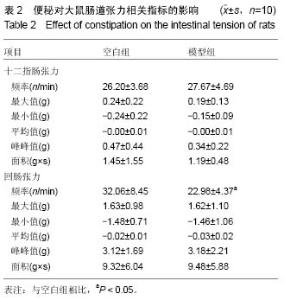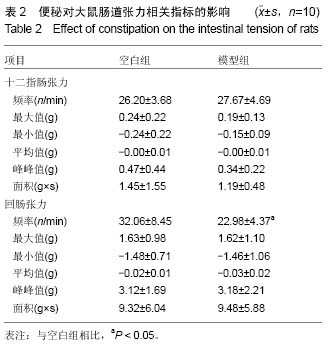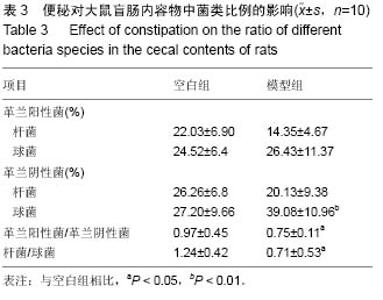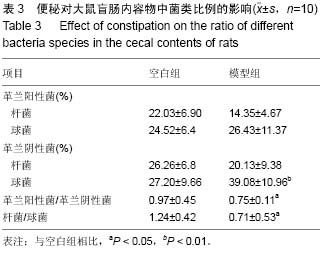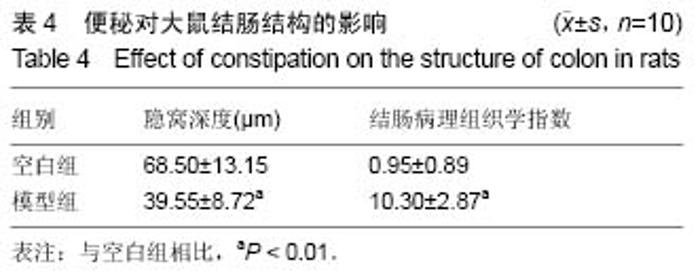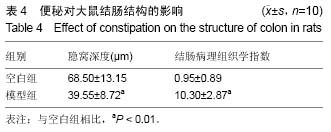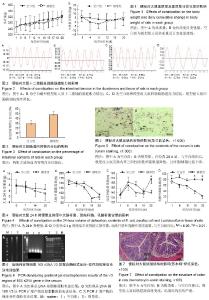| [1] 谢培,周永学.大鼠功能性便秘模型建立方法的研究[J].陕西中医,2014,35(3):377-379.
[2] 赵兵,唐学贵,吴至久,等.复方地芬诺酯建立便秘模型与AQP8的相关性研究[J].中医临床研究,2015(18): 107-110.
[3] Jeffery IB, O'Toole PW, Öhman L, et al. An irritable bowel syndrome subtype defined by species-specific alterations in faecal microbiota. Gut. 2012;61(7): 997-1006.
[4] Bested AC, Logan AC, Selhub EM. Intestinal microbiota, probiotics and mental health: from Metchnikoff to modern advances: Part II - contemporary contextual research. Gut Pathog. 2013;5(1):3.
[5] Suzuki TA, Worobey M. Geographical variation of human gut microbial composition. Biol Lett. 2014; 10(2):20131037.
[6] 李寒冰,吴宿慧,张颜语,等.中药与肠道菌相互作用研究进展[J].中成药,2016,38(1):147-151.
[7] 郭慧玲,邵玉宇,孟和毕力格,等.肠道菌群与疾病关系的研究进展[J].微生物学通报,2015,42(2):400-410.
[8] Yu Z, Morrison M. Comparisons of different hypervariable regions of rrs genes for use in fingerprinting of microbial communities by PCR-denaturing gradient gel electrophoresis. Appl Environ Microbiol. 2004;70(8):4800-4806.
[9] Li T, Lu X, Yang X. Stachyose-enriched α-galacto-oligosaccharides regulate gut microbiota and relieve constipation in mice. J Agric Food Chem. 2013; 61(48):11825-11831.
[10] 胡勇,侯建勇,唐文凤.革兰氏染色实验教学探讨[J].实验室科学,2014,17(6):120-122.
[11] Li AJ, Yang SF, Li XY, et al. Microbial population dynamics during aerobic sludge granulation at different organic loading rates. Water Res. 2008;42(13): 3552-3560.
[12] 张海丽.牛肠道病毒的分离鉴定及HLJ-3531株感染性分子克隆的建立[D].哈尔滨:东北农业大学,2015.
[13] Wallace JL, Keenan CM. An orally active inhibitor of leukotriene synthesis accelerates healing in a rat model of colitis. Am J Physiol. 1990;258(4 Pt 1): G527-534.
[14] 郑倩.便秘动物模型的研究进展[J].临床消化病杂志,2012, 24(3):189-191.
[15] Raes J. The gut microbiome - a new target for understanding, diagnosing and treating disease. Arch Public Health. 2014; 72(Suppl 1): K3.
[16] Koeth RA, Wang Z, Levison BS, et al. Intestinal microbiota metabolism of L-carnitine, a nutrient in red meat, promotes atherosclerosis. Nat Med. 2013;19(5): 576-585.
[17] Goodman AL, Gordon JI. Our unindicted coconspirators: human metabolism from a microbial perspective. Cell Metab. 2010;12(2):111-116.
[18] Zhu L, Liu W, Alkhouri R, et al. Structural changes in the gut microbiome of constipated patients. Physiol Genomics. 2014;46(18):679-686.
[19] Zoppi G, Cinquetti M, Luciano A, et al. The intestinal ecosystem in chronic functional constipation. Acta Paediatr. 1998;87(8):836-841.
[20] Kaiko GE, Ryu SH, Koues OI, et al. The Colonic Crypt Protects Stem Cells from Microbiota-Derived Metabolites. Cell. 2016;165(7):1708-1720.
[21] 白云.表达鼠源GLP-2嗜酸乳杆菌的构建及其对IBD模型小鼠的影响[D].长春:吉林农业大学,2015. |
